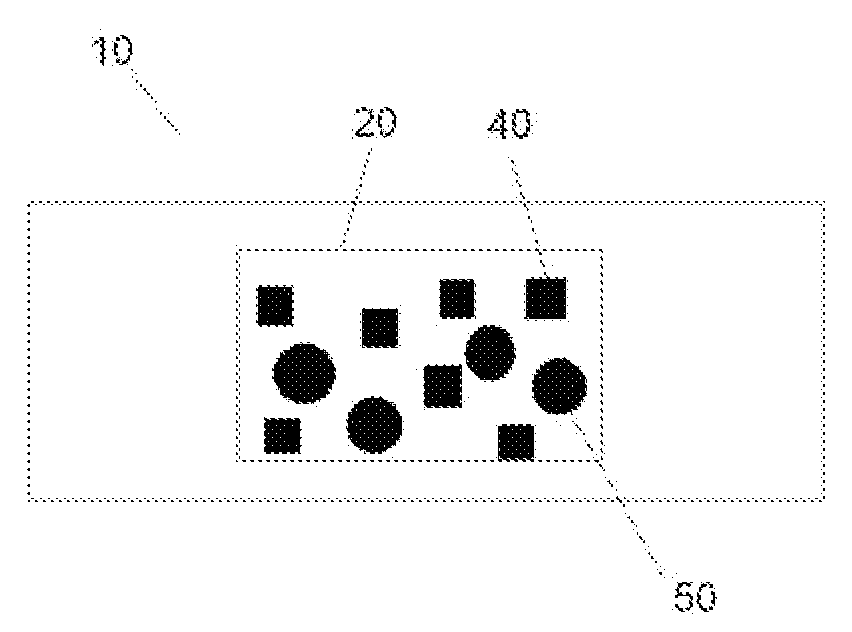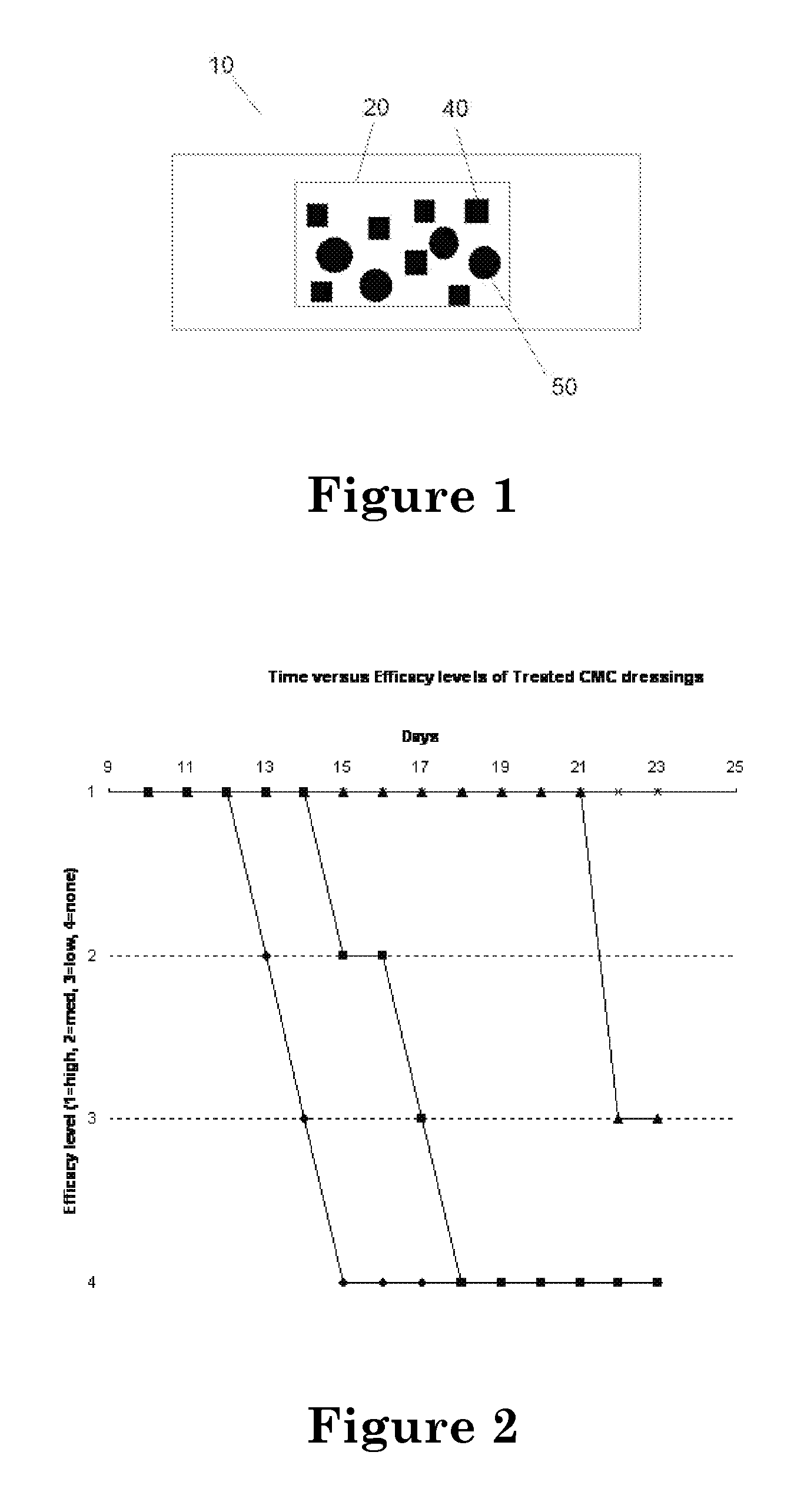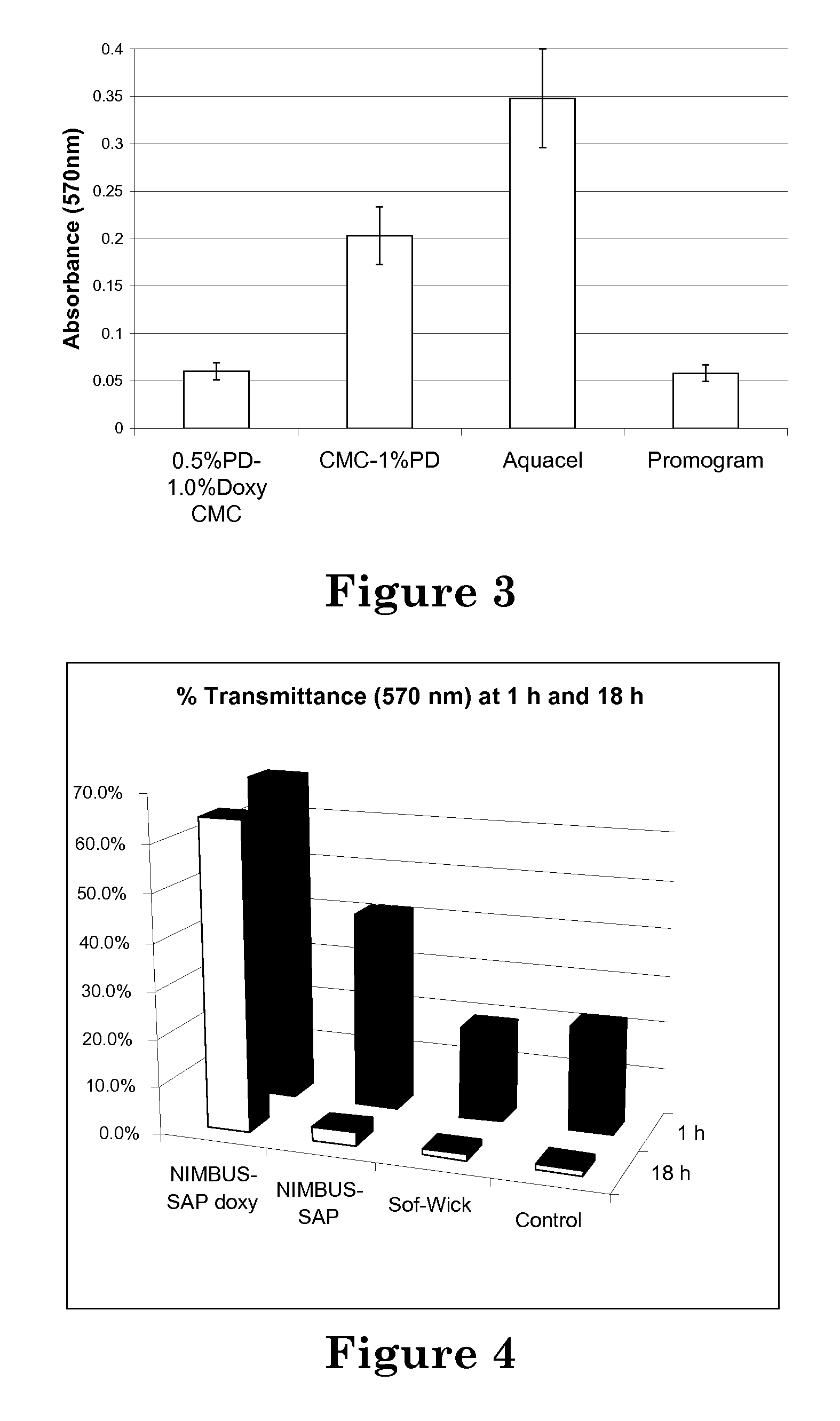Absorbent substrate with a non-leaching antimicrobial activity and a controlled-release bioactive agent.
a bioactive agent and substrate technology, applied in the field of wound dressings, can solve the problems of affecting the health of eukaryotic cells, affecting the healing of wounds, and affecting the growth of bacteria, etc., and achieve the effects of inherent non-leachable antimicrobial and/or antiprotease activity, and inherent non-leachable antimicrobial and/or anti-protease activity
- Summary
- Abstract
- Description
- Claims
- Application Information
AI Technical Summary
Benefits of technology
Problems solved by technology
Method used
Image
Examples
example 1
Preparation of a Treated CMC Substrate Material
[0109]A 4 inch square, hydrofiber CMC wound dressing (i.e. Aquacel®) weighing 1.1 grams and being approximately 24% carboxylated was thoroughly wetted with 20 mL of an aqueous solution of 0.15 wt % polymerized diallyldimethylammonium chloride (total polymer content ˜3%). The wetted dressing was placed in a 60° C. oven on a stainless steel screen mesh and allowed to thoroughly dry until successive weighings indicated no additional considerable loss of weight. To rinse out any unattached polymer, the dressing was submerged in distilled water in a beaker and stirred. The rinsate was poured off and replaced with distilled water repeatedly until the rinsate of a 5 minute soak had the same conductivity as input rinse water, indicating that the rinsate was free of unattached polymer.
example 2
Preparation of a Treated CMC Substrate Material Loaded with Doxycycline
[0110]A 4 inch square, hydrofiber CMC wound dressing (i.e. Aquacel®) weighing 1.1 grams and being approximately 24% carboxylated was thoroughly wetted with 20 mL of an aqueous solution of 0.15 wt % polymerized diallyldimethylammonium chloride and 1 wt % doxycycline. The wetted dressing was placed in a 60° C. oven on a stainless steel screen mesh and allowed to thoroughly dry until successive weighings indicated no additional considerable loss of weight. To rinse out any unattached polymer, the dressing was submerged in distilled water in a beaker and stirred. The rinsate was poured off and replaced with distilled water repeatedly until the rinsate of a 5 minute soak had the same conductivity as input rinse water, indicating that the rinsate was free of unattached polymer.
example 3
Demonstration of the Cationic Charge Character of a Treated CMC Substrate Material Using BTB Dye
[0111]The anionic pH indicator dye bromothymol blue (BTB) was used to demonstrate the cationic charge character of the CMC substrate material prepared as in Example 1. The treated CMC substrate material was placed into a beaker, saturated with 0.5 wt % BTB dye solution, and allowed to fully absorb the dye for about 5 minutes. The treated CMC substrate material was then rinsed repeatedly with water, until the rinsate no longer visibly contained any BTB dye. After the final rinse, the treated substrate appeared an even, medium to dark blue color. Note that BTB dye can be rinsed from an untreated CMC sample very easily, but that this control is complicated by the relatively rapid dissolution of untreated CMC material in aqueous fluids.
PUM
| Property | Measurement | Unit |
|---|---|---|
| particle size | aaaaa | aaaaa |
| temperature | aaaaa | aaaaa |
| pH | aaaaa | aaaaa |
Abstract
Description
Claims
Application Information
 Login to View More
Login to View More - R&D
- Intellectual Property
- Life Sciences
- Materials
- Tech Scout
- Unparalleled Data Quality
- Higher Quality Content
- 60% Fewer Hallucinations
Browse by: Latest US Patents, China's latest patents, Technical Efficacy Thesaurus, Application Domain, Technology Topic, Popular Technical Reports.
© 2025 PatSnap. All rights reserved.Legal|Privacy policy|Modern Slavery Act Transparency Statement|Sitemap|About US| Contact US: help@patsnap.com



